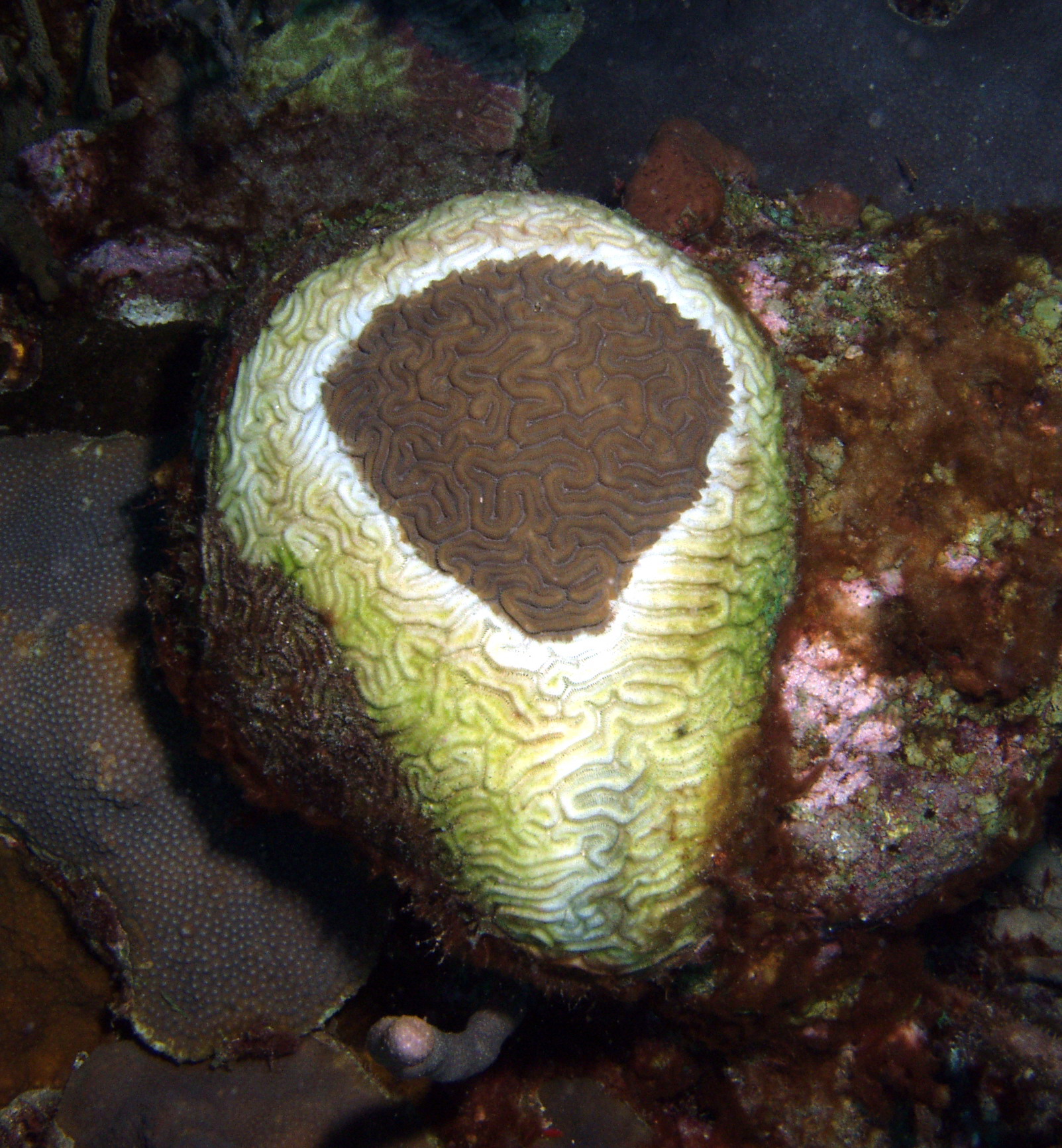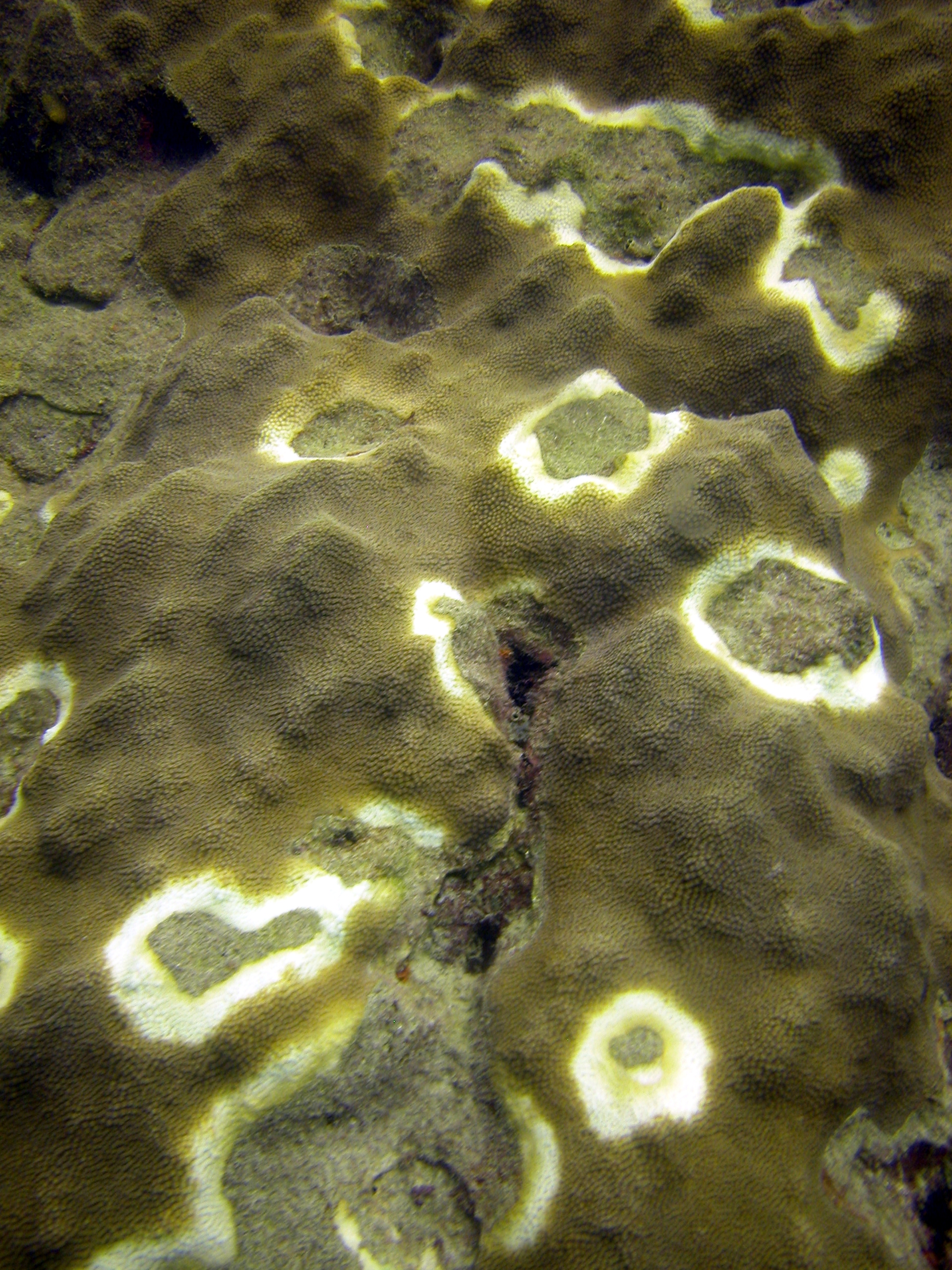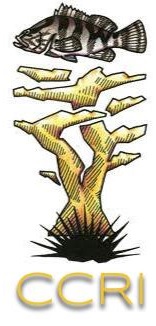The Caribbean has been called a “disease hot spot” due to the rapid emergence, geographic extent and virulence of coral reef diseases and syndromes, where frequent epizootic events result in significant mortality. At present, there are over 20 diseases and syndromes documented, and major losses in live coral cover are directly linked to large epizootic events.
Exposure to adverse environmental conditions that increase stress levels (sedimentation, eutrophication, sewage discharge and particularly the high temperatures that cause coral bleaching), are thought to increase vulnerability to disease and subsequent mortality.
The origins of most diseases and syndromes are unknown, although several are known to be caused by bacteria. Aspergillosis, a disease of sea fans, is caused by a terrestrial fungus and its increase in the Caribbean is thought to be linked to increased agricultural runoff in the region, and perhaps from deposition of Saharan dust.
Disease impacts on reefs are not just limited to those affecting sessile fauna. One of the most serious disease impacts resulted from a virus introduced from the Pacific region in 1983-1984, which caused a mass mortality of the black long-spined sea urchin, Diadema antillarum, throughout the Caribbean. As one of the most important grazers on the reef, Diadema played an important ecological role in controlling algal overgrowth and controlling coral recruitment, both by direct grazing and by control of sediment bed load (the horizontal movement of sediment along the bottom) in reef areas.
Most diseases or syndromes reported for the Caribbean are present in Puerto Rico, and frequent epizootics of white plague-II, yellow-band disease, white-band disease, white pox (patchy necrosis; WPX), bleaching and aspergillosis (ASP) continue to result in significant losses of coral cover, such as biomass and photosynthetically active surface area. Qualitative surveys of more than 100 coastal and offshore localities around the island during the last 25 years indicate a significant decline in populations of Acropora spp.
An island-wide survey was recently carried out to determine the status of diseases in coral reef communities, totaling 16 reefs assessed during the summer of 2006. Overall, 16 different infectious diseases and syndromes were identified in PR coral reef communities. Of these, 11 are affecting scleractinian corals, three are affecting octocorals, two are affecting zoanthids, two are affecting sponges and at least one is affecting crustose coralline algae.
Click on the different diseases to learn more!
- Black-band disease (BBD)
- White-band disease (WBD)
- White plague-II (WP-II)
- Yellow-band disease (YBD)
- Aspergillosis
References & more
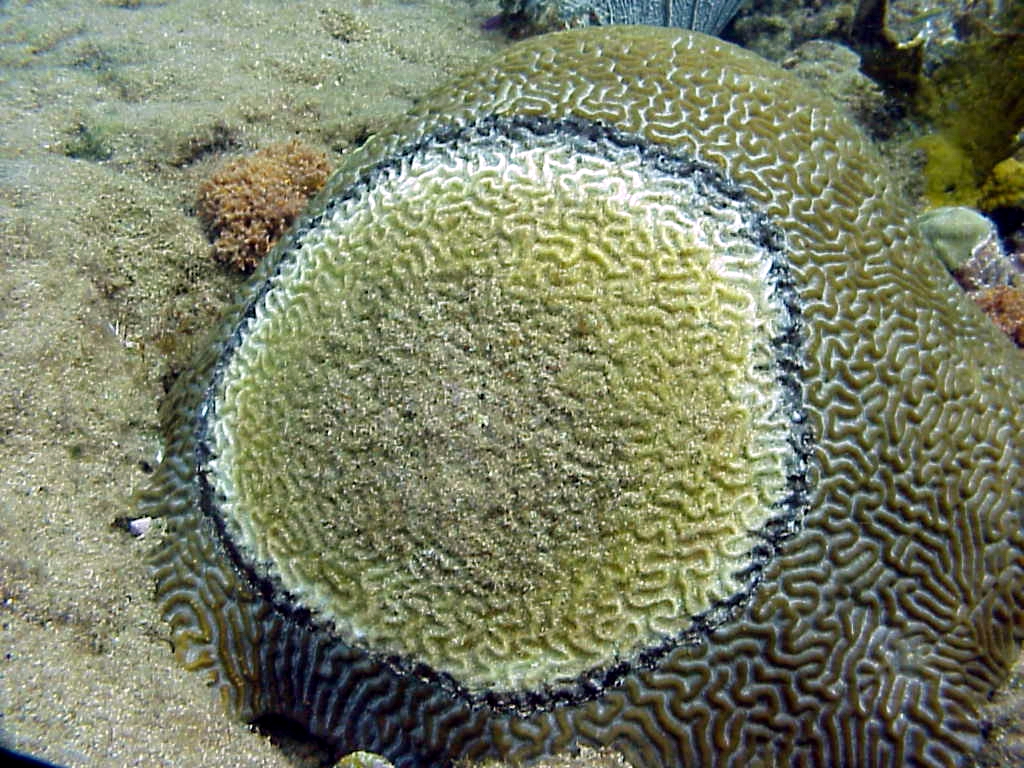
Credit: Ernesto Weil
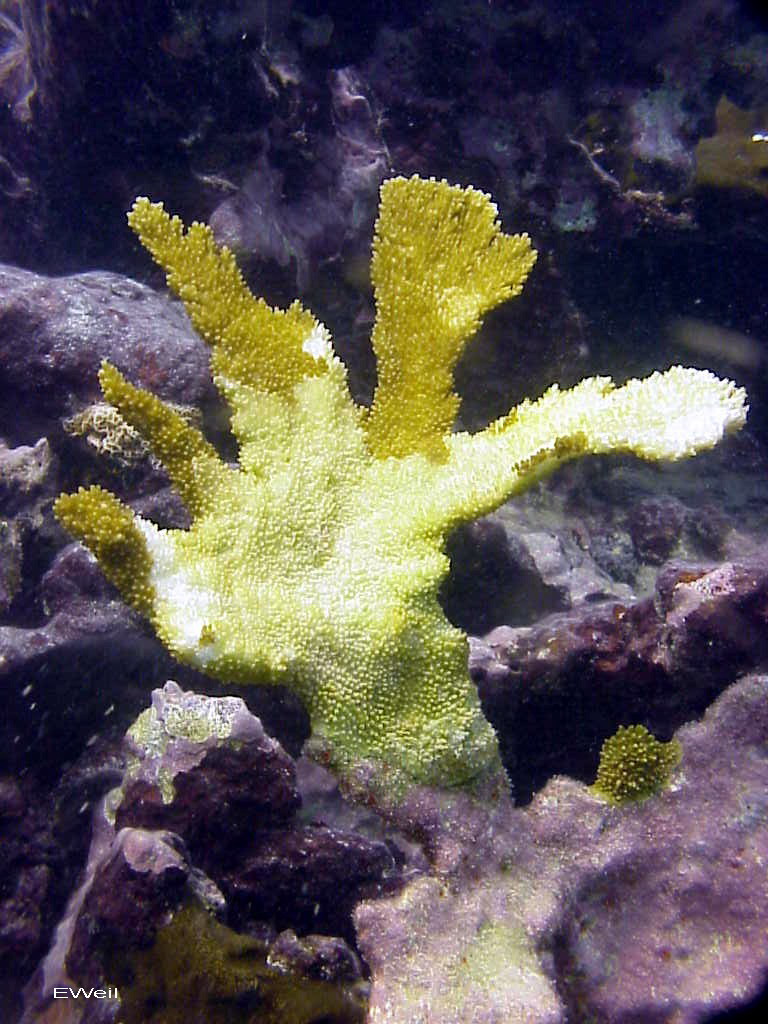
Credit: Ernesto Weil
